The neatest Volkswagen collection in South Africa can be found outside what is known as the rose city of South Africa, Bloemfontein. Gerhard Ryksen opens the doors to his colourful collection.
“My philosophy is to find cars that are in no need of restoration... meaning, cars that the first owner had eagerly maintained for a number of decades and which I can then continue doing,” says Gerhard Ryksen, an avid South African VW collector who we previously featured in Episode 17 of the SentiMETAL video series.

If there is a criticism to be levelled at Ryksen’s Volkswagen collection, it’s that his location – in the middle of the Free State – is so far away from the coast! Surely all the Kombis should have surfboards on the roof and be parked next to the beach? Given that the pristine structure that secretes his homage to Wolfsburg was purpose-built, we will forgive him this geographical shortcoming: Gerhard is doing his part to preserve VW’s heritage.

The building also houses his office and a small entertainment area. Next door there is a restoration facility along with a covered area that stores projects and some hard-to-find parts he might consider selling… at the right price, of course. Gerhard bought his first Beetle at the age of 16, fixed it up and sold it for a small profit. He then got another one and so his interest in Volkswagens and collecting examples of the Wolfsburg brand grew. Because his previous jobs kept him deskbound, Gerhard felt he needed to do something creative with his hands, “other than moving documents around”.
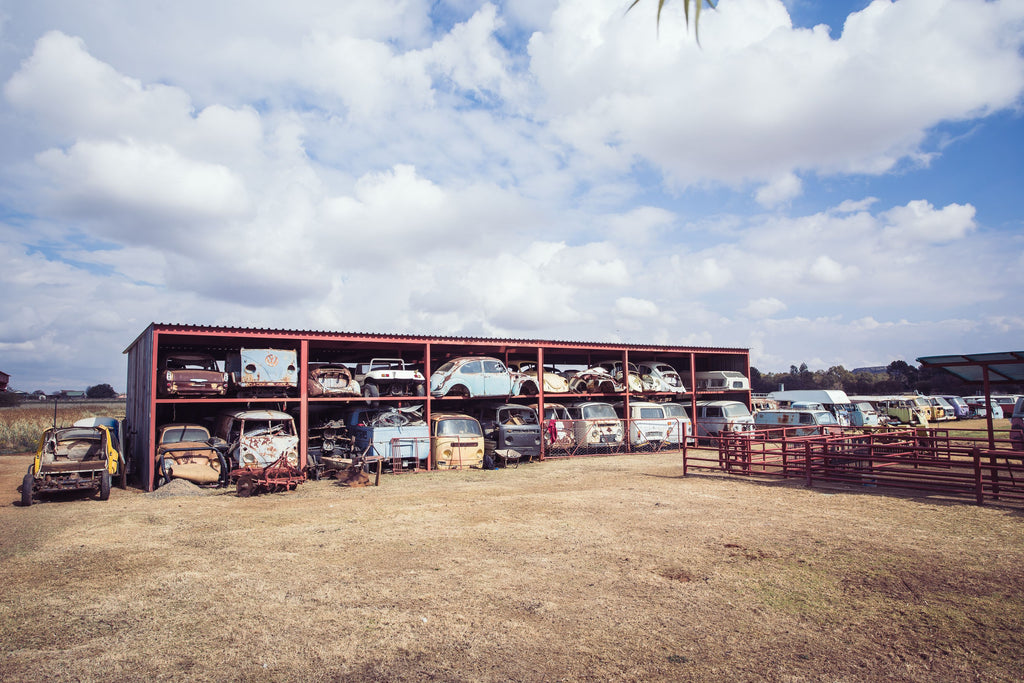
Gerhard is a walking encyclopedia on Volkswagen details and specifications and, as was the case with many of us petrolheads, the seed was planted early. “A month after my birth, my father realised we needed a larger car and bought a 411 station wagon. I grew up with the Variant and we had one until I left school.”

Against one side of the main building, more than 15 Beetles are parked, including sought-after Karmann Cabriolets, and on the opposite side is an assortment of Kombis. But my eye catches the real treasure of the collection; a Brazilian-built 1976 Volkswagen SP2 (featured in Episode 17 of the SentiMETAL video series). It’s one of only three believed to be in the country and the only one officially imported through Volkswagen South Africa. Like many other sought-after VWs in his collection, it’s not a car that simply fell into his lap.
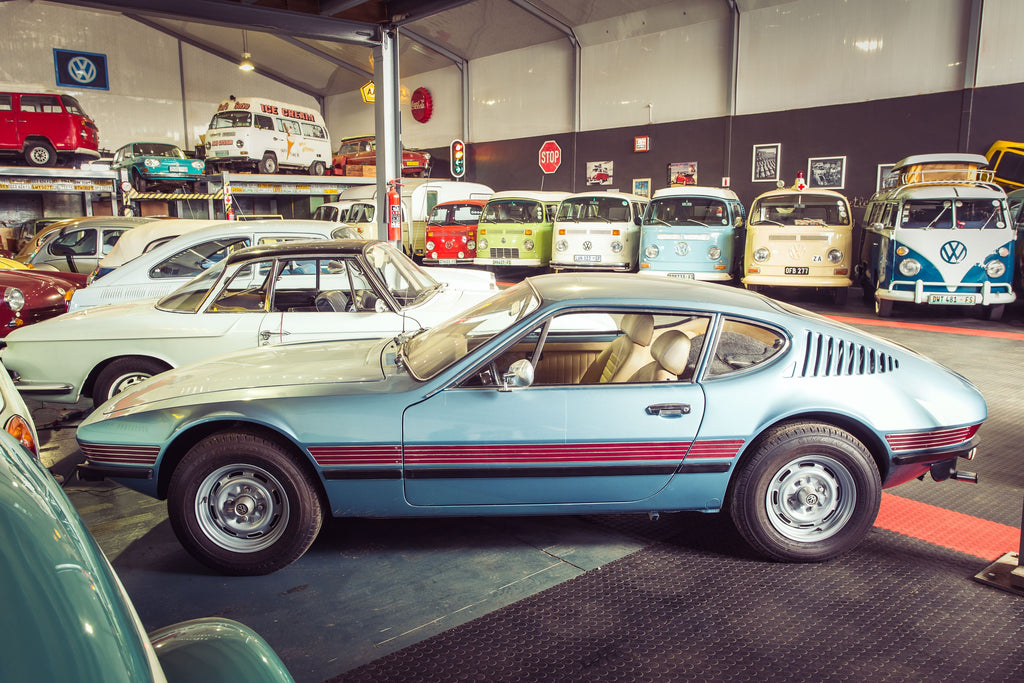
“These cars were produced in Brazil and only around 11 000 were manufactured. This is the only one in the country that is on the road and running. It has only 27 000 miles on the odo and I’m only its second owner. It took me a number of years to acquire the car from the previous owner. It stood for a decade in the basement parking area of a bank in the university town of Stellenbosch in the Western Cape.”
“When the owner told me that he was willing to sell me the car, I immediately boarded the overland bus with jumper cables and a small toolkit.” Gerhard clearly believed that he would be able to get the car up and running! “The SP2 was covered under a thick layer of dust, but eventually I managed to start the car. I took it to a car wash and then decided to drive the 250 miles to the coastal town of Mossel Bay. Along the way I had to replace a small brake line, but from Mossel Bay onwards I continued north a further 500 miles to Bloemfontein without incident. I’ve had the car for 14 years now, during which time it has clocked only 1 900 miles. I keep it original and look after it as best possible.”
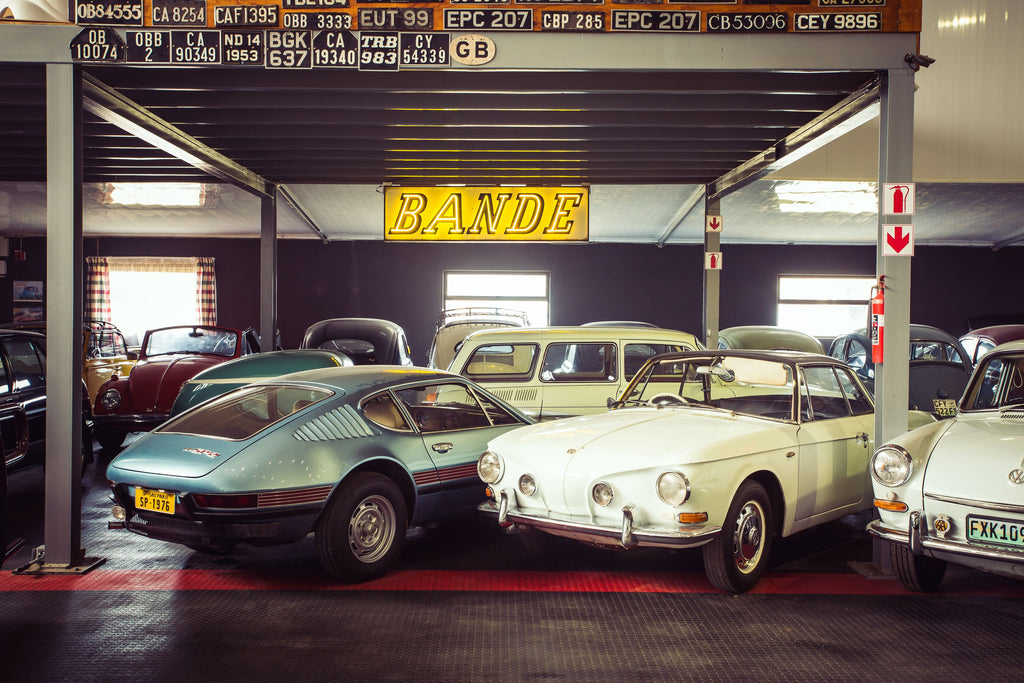
“I do have a few vehicles that I have restored, like the Karmann Ghia and Autovilla campervan, to name but two, but those are usually cars of which I’m confident I won’t be able to find a well looked-after example.”
Originality is, fortunately, an important part of collecting for Gerhard. His oldest car is a 1952 Beetle that he bought from a friend and it’s currently undergoing a full restoration.
“I decided to store the car until I had the correct setup and equipment required to restore it. It is not the type of car you send off for someone else to work on. Some cars need expert and thorough attention, and this is one of them.”

Gerhard pushes out another special Beetle, a 1978 Volkswagen SP 1600. These were only built in South Africa. Similar to what Volkswagen South Africa had later done with the Mark 1 Golf (called the Citi Golf in South Africa and produced in large numbers until 2009), this was a special edition version that was for sale towards the end of the Beetle’s production life.
The 1,6-litre engine featured twin Solex downdraught carburettors, raising the output. The SP also featured double exhausts, checkered cloth and vinyl seats, front spoiler, 14-inch wheels, spotlights, sport steering wheel as well as additional dials indicating oil pressure and battery voltage.
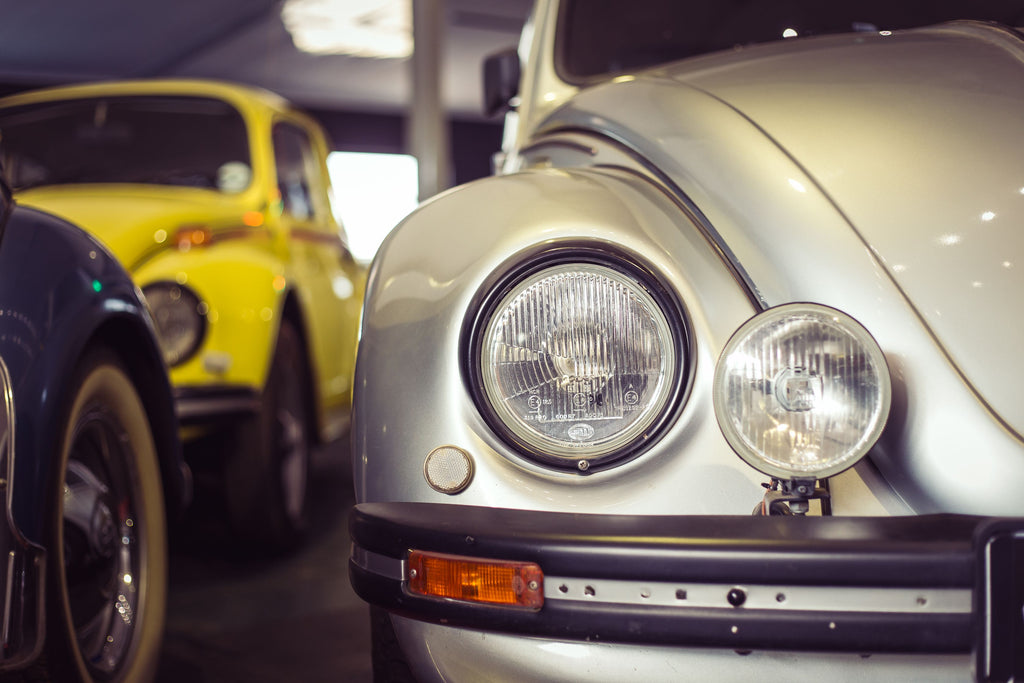
“In the end it was more about the looks, as it was not really much faster than the non-SP models. There are also no chrome trimmings, as everything was black. I found this Beetle right here in Bloemfontein and it has only 42 000 miles on the odo.”
I love the look and feel of the seats and Gerhard proudly states that those, as well as the rest of the interior, are all still 100 percent original.
“There were other limited edition models like the Fun Bug, the Jeans Bug and the Lux… all these just marketing efforts to sell a few more cars towards the end!”
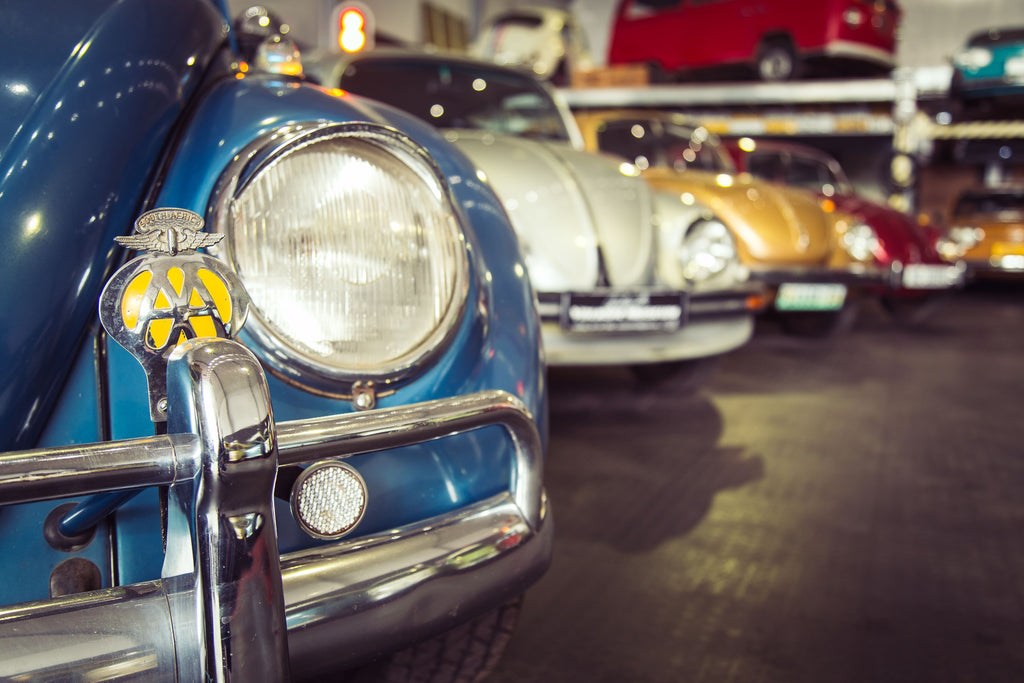
When it comes to driving them, don’t for a moment think Gerhard merely polishes and then parks his cars. He hands me two albums filled with pictures of two separate trips he made with two of his Kombis that have covered thousands of kilometres. He might not live near the coast, but he makes sure the Kombis experience their natural environment.
“This is a working museum. I can get into any of the cars and turn the key. I can confidently take 70% of them for a long trip on the open road.”
And what better way to tour than with a 1974 Jurgens Autovilla 1800, a Volkswagen that is not well-known outside South Africa. There is a good reason for this obscurity, though.
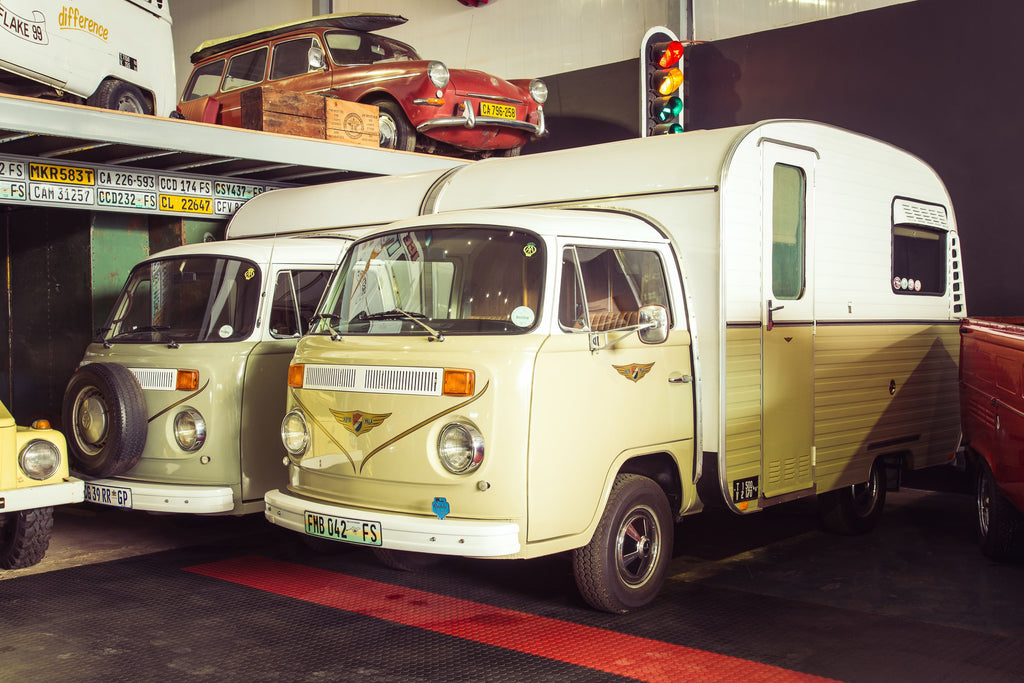
“Autovillas were manufactured by a South African company called Jurgens, which is still in existence today. The company bought Volkswagen Kombi pick-ups and then converted them into these motorhomes. This model is from the first year they produced these conversions.”
The two-tone body perfectly fits the style of the era while the vinyl seats and door cards are in perfect condition and also do a convincing job of taking you back in time.
“I bought this car from a friend of mine in Vereeniging. As it was not in a great condition, I decided to strip it and completely restore it. Here and there I’ve used better materials than they did 45 years ago, but never where their application is obvious. An example is where wood hardboard was used. I’ve swapped it for a type of plexi-glass. The result is that if water should enter, it won’t get damaged.”
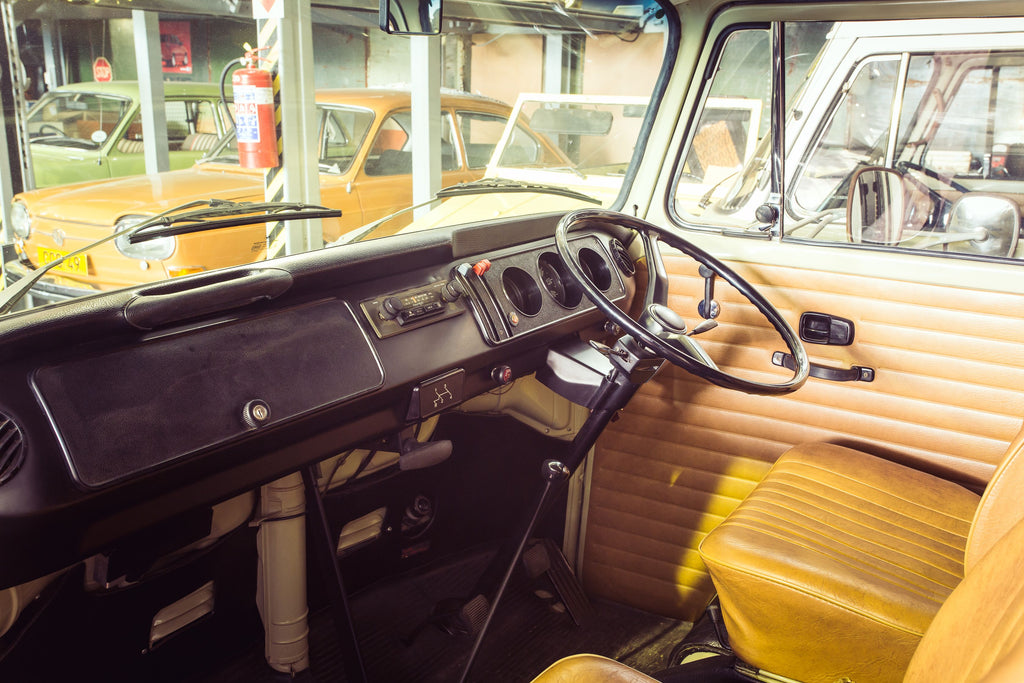
“Originally the Autovilla was fitted with the 1.8-litre air-cooled engine. That engine’s parts are harder to obtain than the 2.0-litre version. So, I’m actually busy swapping the engines and I plan to fit the 2.0-litre engine with fuel injection. Plus, I’ll have modern software for the fuel injection system which will allow me to map it myself. In addition to better performance, having such an engine also benefits the practical element of the car.”
“Obviously the engine is still mounted in the rear, which means it is underneath the bed. So when you tuck in at night, your nostrils remind you that you are in the company of an air-cooled flat-4. Even your bed linen has that smell!” This fact doesn’t seem to bother Gerhard as he chuckles while telling me this. “We call it the Familiar Air-Cooled Smell, but recently when we went on a road trip, the clutch started giving problems, so this smell was overwhelmed by that of the burning clutch!”
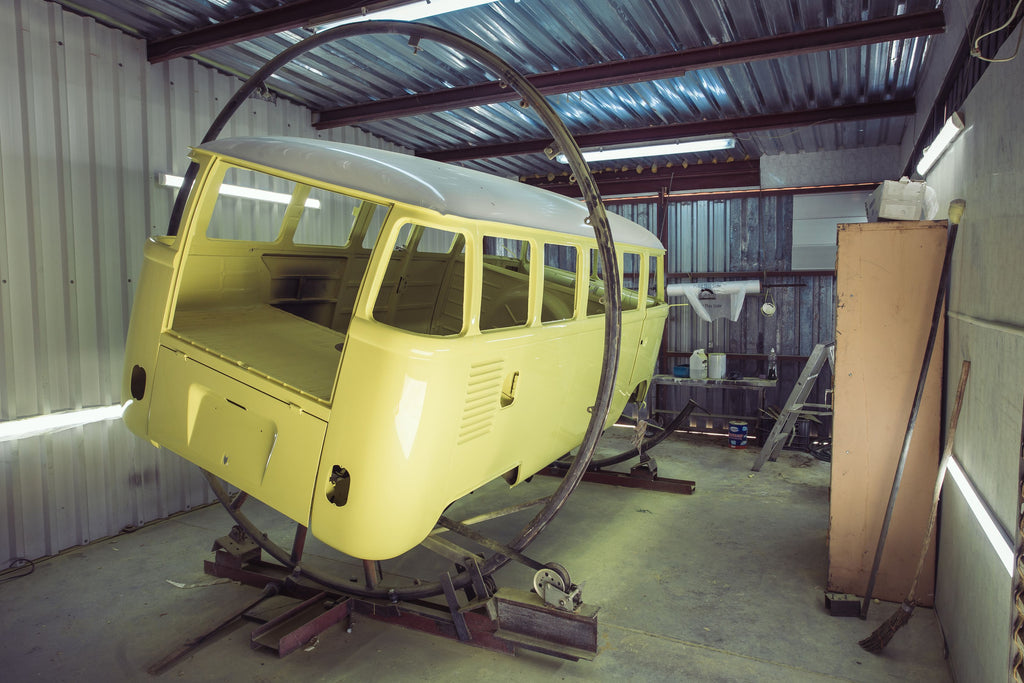
“I always try to keep the cars as original as possible when I restore them or when I need to replace parts. I will often buy another car just to have access to parts in that car that will fit and benefit the car I’m restoring. It takes time, but you need to be precise. To achieve a high level of quality, you need to do it right.”
Another car in line for restoration is the oddly named Volkswagen Thing, from 1969. It is undoubtedly the closest VW ever got to manufacturing a vehicle similar to the civilian Jeep. Although, as the name suggests, the car is anything but attractive, these "things" are unique and much loved by Volkswagen enthusiasts. “I found the car less than two hours’ drive from Cape Town in the coastal town of Hermanus. It is actually an interesting story. The previous premises where some of my museum cars stood got a lot of attention from the public. So much so that an assistant of the landlord showed enthusiasts the collection just about every single day.
One day I received a phone call from a gentleman who visited the collection. He said that a friend of his had a car in Hermanus and that I should buy it.” The rest is history.
“It is also in line to be painted and partially restored. The engine is a standard Beetle unit, although it has the Kombi’s reduction gear setup. The result is that it pulls stronger at lower speeds, but that also means it is slower."
No Volkswagen collection would be complete without Kombis, of which Gerhard has several. He places two of them – highlights of the collection – centre stage to provide me with the opportunity to admire them from all angles.
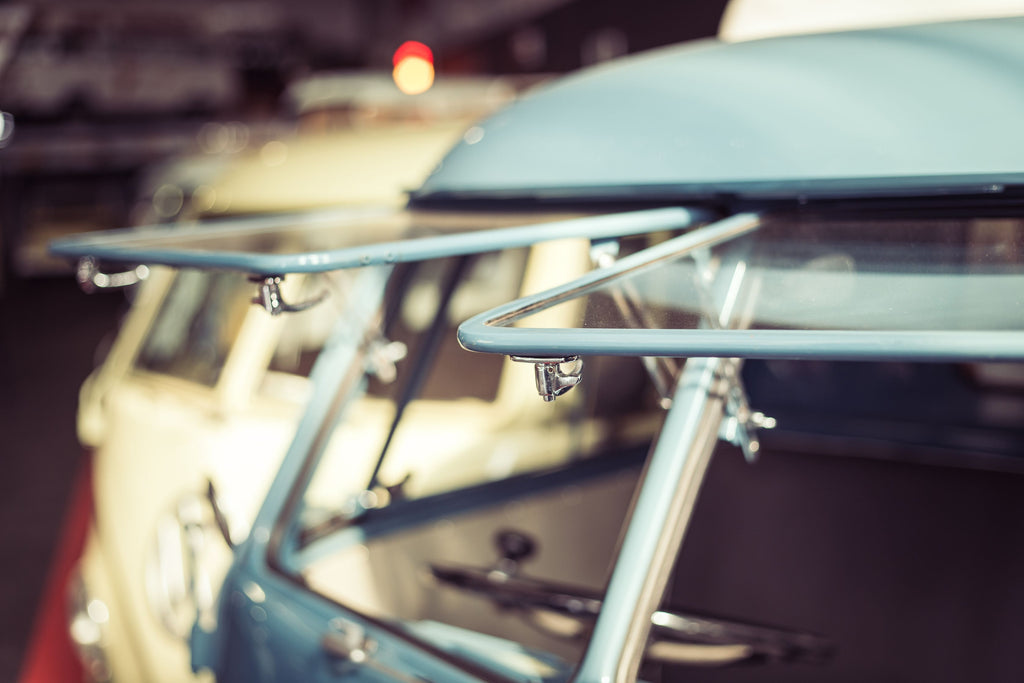
Gerhard opens the two small windscreens outward on the 1958 Volkswagen T2 single cab and immediately you realise that a novelty like this would simply not be allowed today. “I found it on a farm just outside the mining town of Kimberley in the Northern Cape. It was in a terrible state and full of rust. We had to remove panels, cut the rust out and weld in new pieces of metal. Needless to say, this T2 had to be stripped completely.”
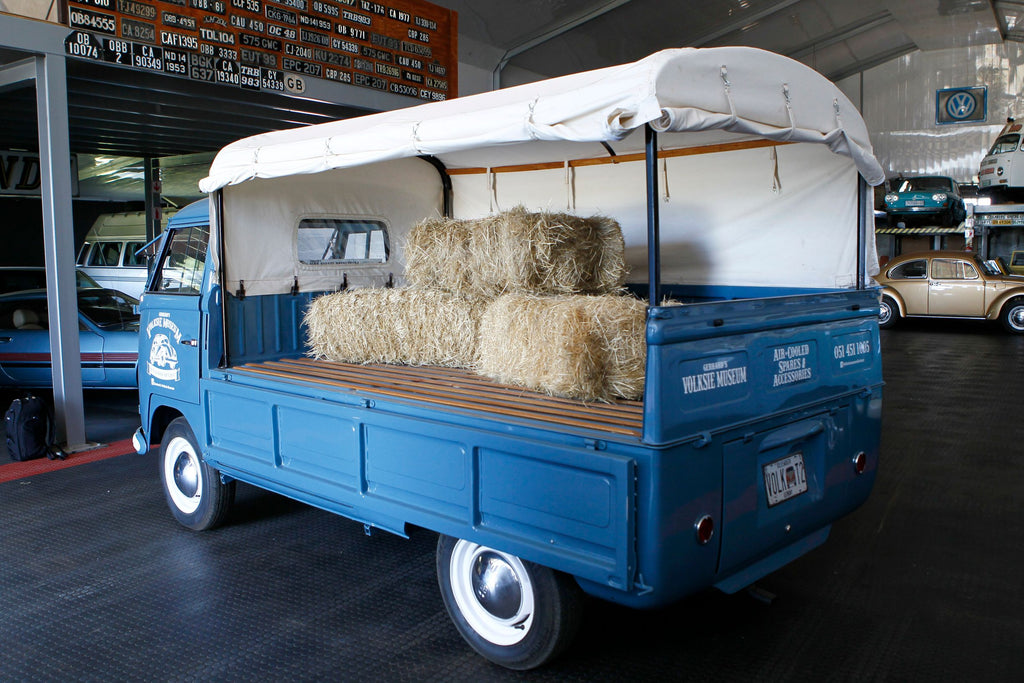
“It helped that at the time of restoration I had another three in various states of repair in the collection. Gleaning nuggets from them we were able to learn what to do and how to repair it. In the back is the four-cylinder 1.2-litre, air-cooled engine.”
I wondered how Gerhard knew about the correct design and dimensions of the rear canopy. “That is also original. The frame is the one it came with, while the wooden parts were manufactured as part of the restoration as was the sturdy cover. I found pictures of these old single cabs which assisted with the correct design and patterns for the woodwork and the cover. The wooden slats mounted in the loading bay help to limit damage to the paintwork.”

This is one of the cars in the collection which has travelled across South Africa. Gerhard has taken it to both the Parys and the George Motor Show, the former a 380-mile return journey and the latter a more significant 1 000-mile trip.
“In South Africa we don’t always have access to all the parts found in Europe and the US. Even if you do import items, you are not sure what the quality of those items will be. The result is that we painted the doorcards seven times until they offered the correct texture... as close as possible to the original items.”

Hot on the heels of the Autovilla campaigning for Best Camper in this collection is the 1965 Volkswagen T2 Westfalia. I open the passenger door and am immediately transported to simpler times. The cabin is extremely basic, but at the same time the wood inserts all along the inside of the doors and along the footwell almost add a veneer of luxury to the cabin.
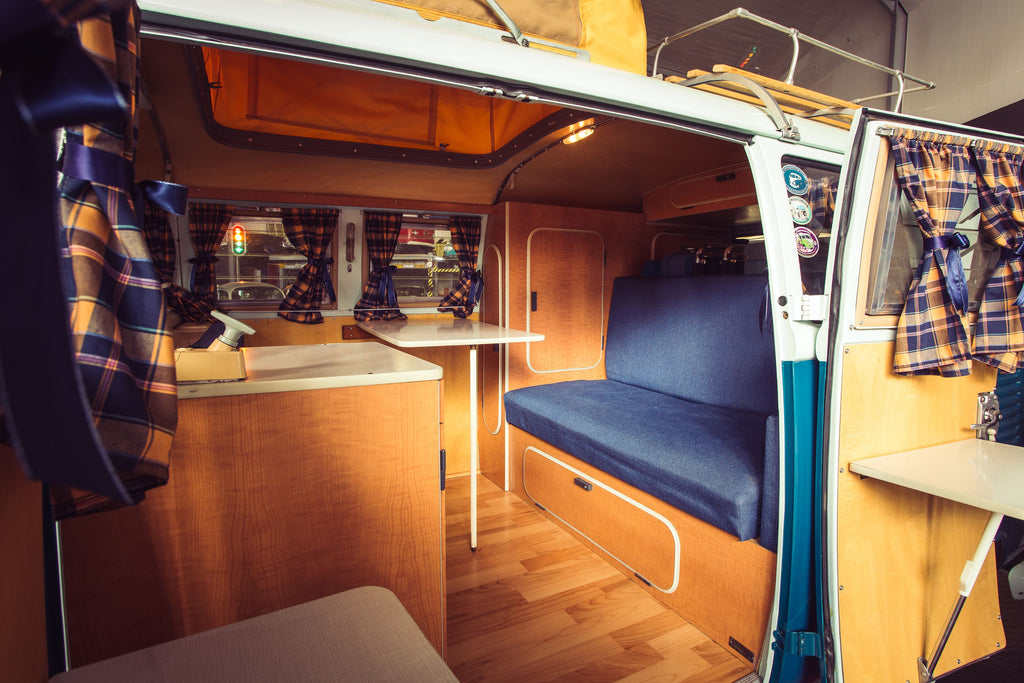
“In those days Volkswagen didn’t fully build these campers, Westfalia did. Westfalia converted these T2s into full-on campers. I bought this T2 in the early 2000s. It was painted a horrible colour and the interior also needed attention. I didn’t have a choice but to take the T2 apart. I painted it in its original colour and had all the wood trim remanufactured. The roof racks we manufactured ourselves using an original as a template.”
Gerhard even had a tent made to clip onto the T2. Again, he used a template to make the new version. “The seats were originally also vinyl, in a similar colour to the wooden door cards. But with our hot climate here in South Africa you tend to perspire excessively on the vinyl. Thus, for practical reasons I chose this material. You need to think carefully before you buy material for the seats or the curtains, because they need to complement each other. Taking the time to match the fabrics meant the curtains fit in perfectly, as they have elements of the wood trim as well as that of the seat fabric.”
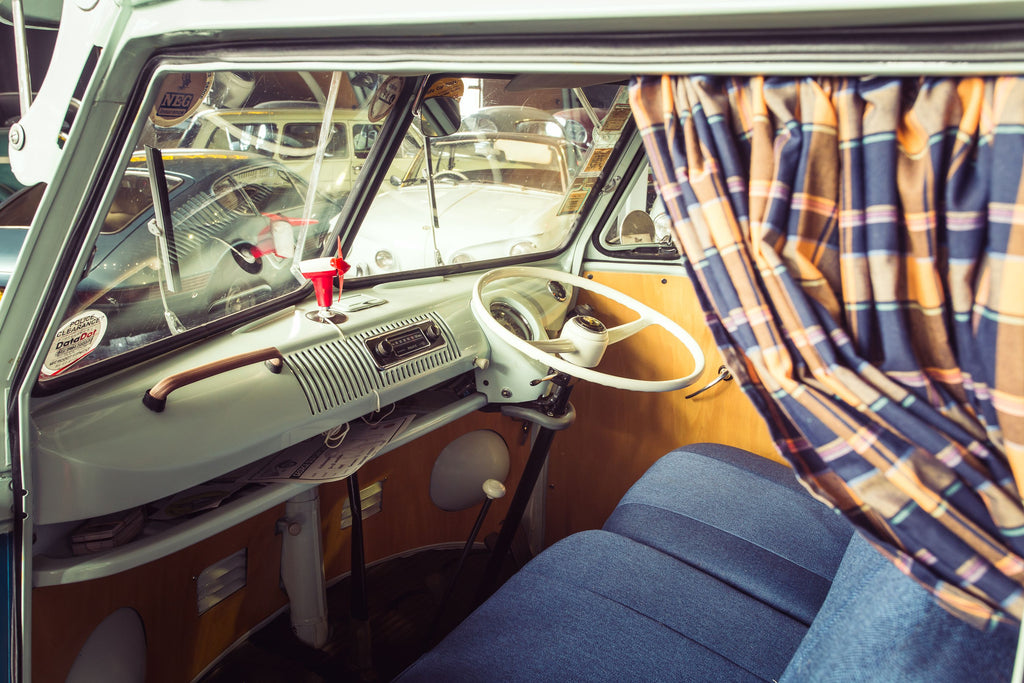
It is such a unique vehicle, being a classic camper. The matching curtains and the side windows with the slats are features of a bygone era, looking almost quaint by today’s standards. Yet they fit in with the spirit of the vehicle perfectly. Just looking at it, the Westfalia makes one want to overnight at a period event like the Goodwood Revival.
Speaking of camping, as we wrap-up our visit Gerhard makes it clear he is always ready for his next adventure at the drop of a hat: “Give me 30 minutes and I’m ready with the trailer to hit the road!”

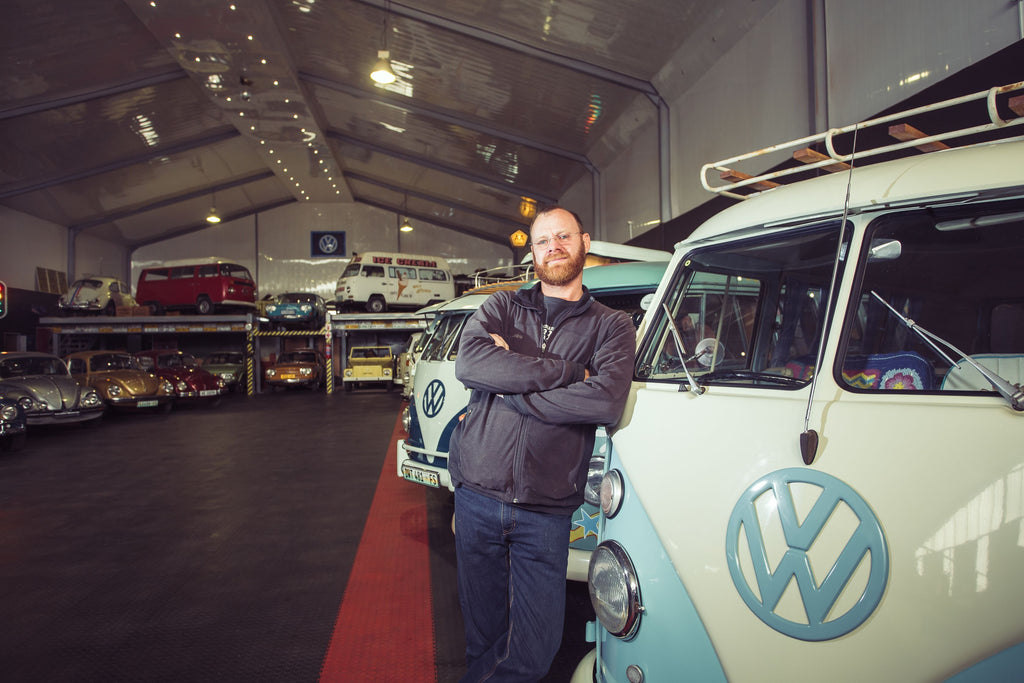
Hi Gerhard
Absolute stunning collection you have😁
I’m searching for the JEANS badge on the rear deck lid?
Regards
Darren
UITSTEKENDE VERSAMELING!!!
Ek het sopas n 1973 beatle gekoop. Hoe trots is ek nou op die volla . Perfek soos uit die fabriek . Weet iemand die waarde van my volla
Very interesting article we also owned 2 Volkswagen Beetles
Wow , Was für eine Tolle Sammlung. Ich bin ja mit dem Käfer und all den anderen VW,s Aufgewachsen und habe einige Selbst gefahren . Sowie 40 Jahre bei VW in Wolfsburg gearbeitet. Respekt Gerhard einen Wagen oder mehrere zu Pflegen ist ja schon viel Arbeit . Aber so eine Sammlung .da sieht man wer mit Herz dabei ist. Liebe Grüße aus Wolfsburg